Seaweed is a highly nutritious and delicious superfood that has been a staple in many cultures for centuries who know the benefits of eating seaweed everyday.
Not only is it packed with vitamins and minerals, but it also has numerous health benefits that make it a great addition to any diet. Here are just a few reasons why you should consider eating seaweed every day:
- Seaweed is an excellent source of essential vitamins and minerals. It is high in iodine, which is important for healthy thyroid function, and is also a good source of vitamins A, B, C, and E.
- Seaweed is rich in antioxidants, which can help protect your cells from damage and may even help prevent chronic diseases.
- Seaweed is a low-calorie, low-fat food that is high in fiber, making it a great choice for anyone looking to lose weight or maintain a healthy weight.
- Seaweed is a sustainable food source that is rich in omega-3 fatty acids, which are important for heart health. Eating seaweed can help lower your risk of heart disease and stroke.
- Seaweed is versatile and can be added to a variety of dishes, from soups and salads to sushi and smoothies. It has a unique and delicious flavor that is sure to be a hit with the whole family.
By adding seaweed to your daily diet can provide numerous health benefits and is a tasty way to boost your intake of essential vitamins and minerals.
Table of Contents
But there is so much more packed in to the gift that we have in seaweed as a measured food source. Sea Moss is popularly believed to contain 92 of the 102 minerals that are found in the human body, yet many of us know so little about it.
When it comes to eating seaweed most of us have become familiar with Miso soup and sushi. But the benefits go way beyond the delicious flavours we know in dishes like these. Stick with me and I’ll take you on a journey where we will explore the health benefits of eating seaweed everyday.
We’ve been cooking with seaweed for a while now. Over time we have experimented with different kinds of seaweed, which makes for interesting new recipes.
Seaweed is something that many people tend be a bit skittish about consuming. Sushi has become the most commonly consumed means of seaweed being a part of a meal in the Western World today.
There are various types of seaweed like Kelp, Bladderwrack, Wakami, and Dulse. And there are various types of seagrasses, which are macroalgae too. All of these sea vegetables are packed with an array of minerals, and various trace elements.
Most notably for me, the stand out is Iodine with the benefits it brings.
Why Would You Eat Seaweed?
For many, it’s such an odd thing to eat. I mean, if you look at plant foods, such as fruits and vegetables, these don’t strike us as odd to eat. But seaweed and algae for some, sadly, can be a bridge too far.
Seaweed and algae are just sea vegetables that are mainly harvested from the ocean, but they can also grow in fresh waters. As an addition to your diet, they are incredibly healthy thing to eat.
In fact, ancient cultures have used seaweed as part of a healthy diet for centuries. Many of them regard seaweed as an important part of their lives because it has many uses. Some of these even include being used as medicines as they understood the benefits of eating seaweed. 1
Recommended Daily Intake (RDI)
So, how much seaweed is too much seaweed? Surely there is such a thing as too much of a good thing?
Yes, there is. The World Health Organisation’s (WHO) recommended daily intake (RDI) is 150mcg of Iodine for an adult, and for pregnant women approximately 250mcg. 2
Care needs to be taken with iodine as the upper tolerable limit is understood to be 1,100mcg per day. Any more than this and you could cause your body some very serious health problems over time. 3
Levels of Iodine vary considerably between species of seaweed. For example, there can be between 1,800mcg and 2,500mcg of Iodine in 1g of raw Kelp (equal to 2,500mg per 1kg), versus 72mcg of Iodine in 1g of raw Dulse (equal to 72mg per 1kg).
Some countries treat certain seaweeds as hazardous, particularly if they contain more than 1,000mg of Iodine per dried kilogram of seaweed. 4
Now, you may be thinking, ‘you’ve just told me that I should be doing all I can to get the benefits of eating seaweed‘, but Kelp far exceeds the recommended daily intake (RDI) for Iodine. Yes, that’s true.
So I obviously wouldn’t encourage you to eat Kelp straight from the ocean or out of the packaging. There is some processing you will need to follow to make the product palatable.
Many seaweeds will require you to soak them before you can consume them. Some even need to be cooked first. You can reduce the Iodine content in Kelp by up to 99% by boiling it for 10 to 15 minutes. 5
This is why most recipes that contain Kelp require cooking. But this is not required for all species of seaweed.
Remember, the more variety of microalgae and macroalgae that you consume, the broader the variety of nutrients you will receive. I eat Dulse, Wakame, Kombu, Irish Sea Moss, Kelp, Nori, Spirulina, and Chlorella on a regular basis.
You don’t need to eat the same type of seaweed every day. Change it up a bit, and keep it interesting. Remember that good old saying; variety is the spice of life!
What Are The Different Varieties of Seaweed?
As mentioned above, there are quite a few different species of edible seaweed. Would you believe that there are over 35,000 species of seaweed? Scientists have painstakingly grouped seaweed by their color pigments, and cell structures.
A great resource for beginning your journey and taking a deeper dive into the specifics of seaweed and their taxonomies is the World Register of Marine Species.
Some of the more common types of seaweed include:
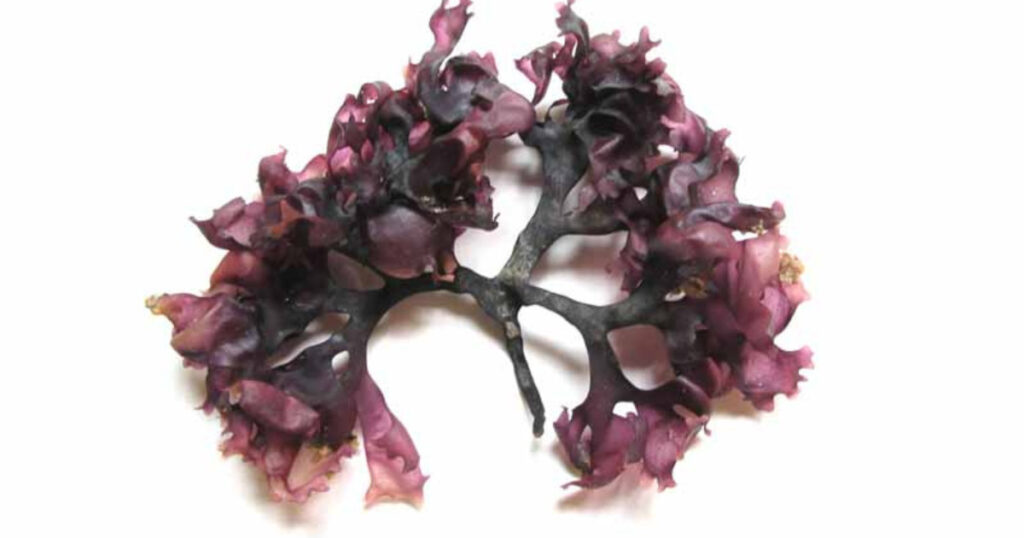
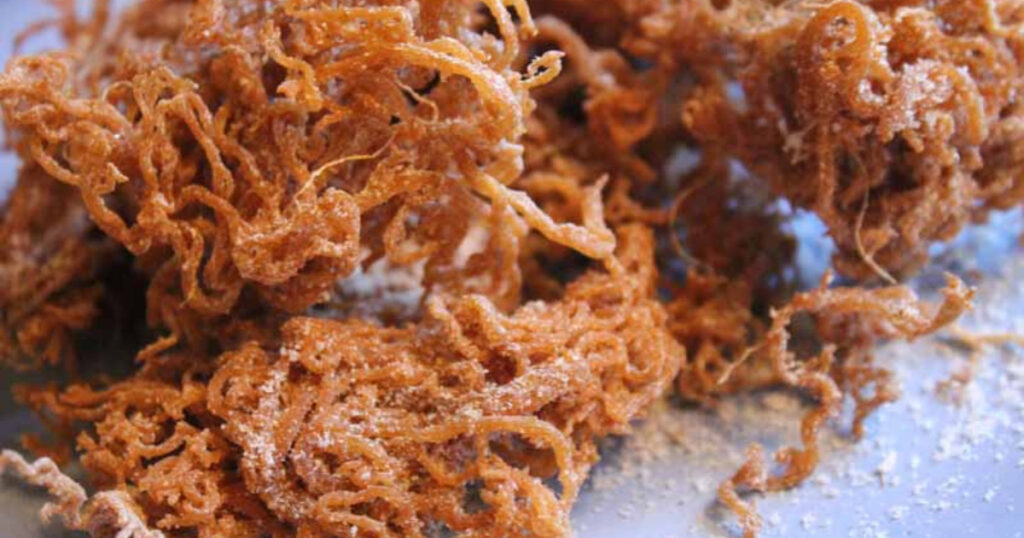
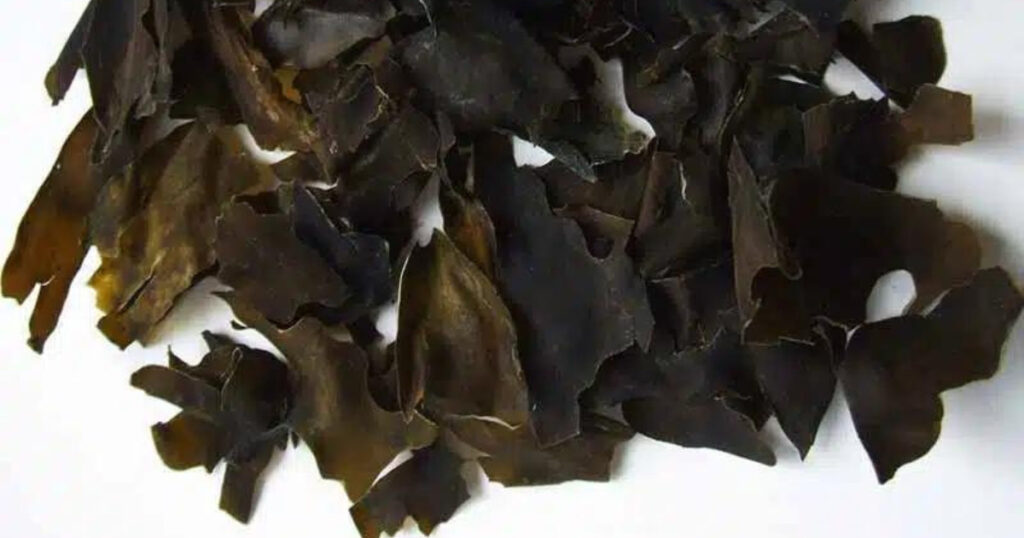
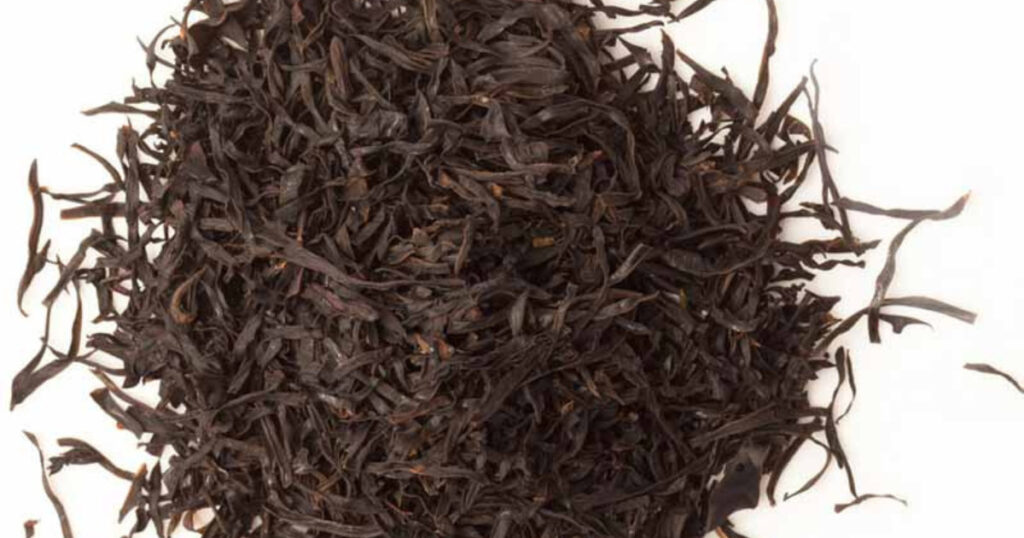
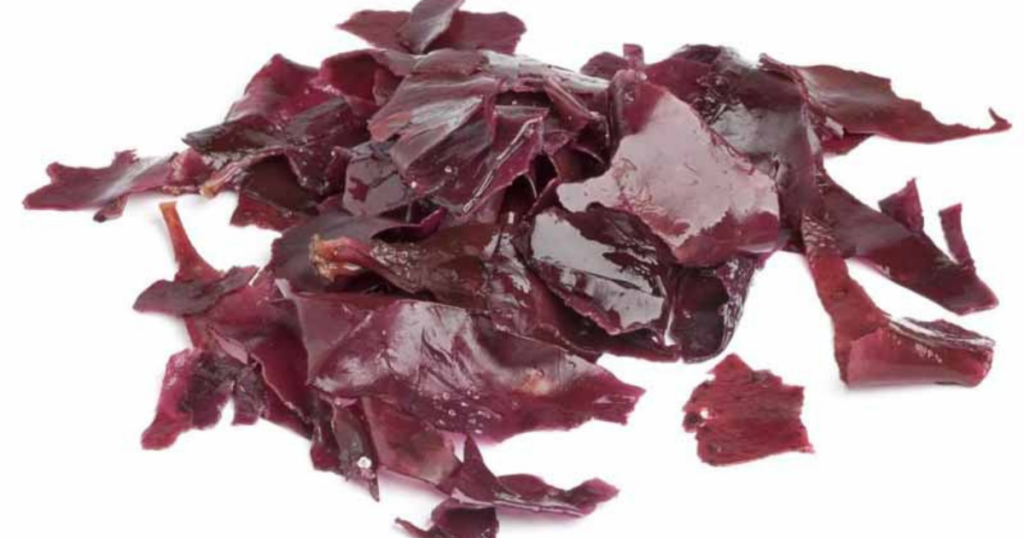
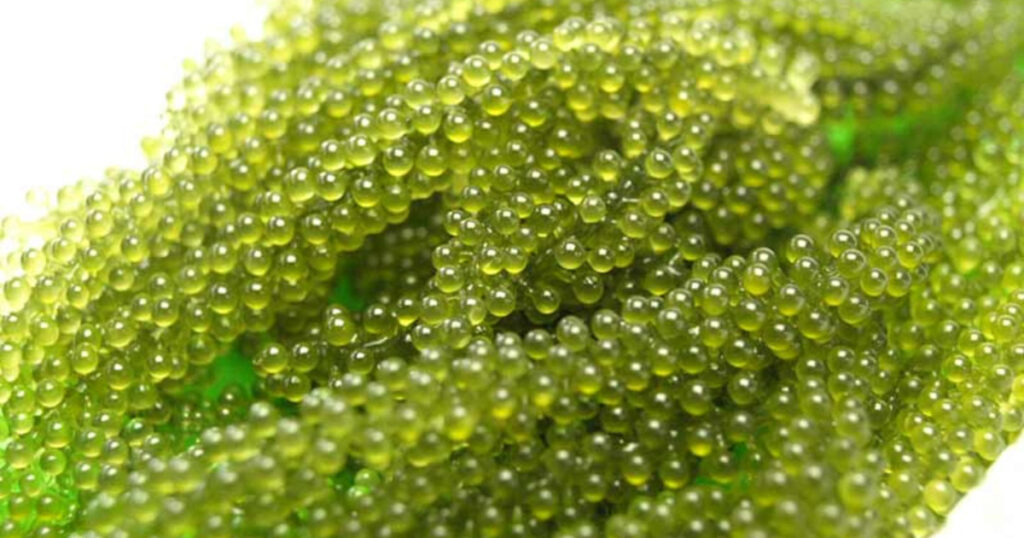
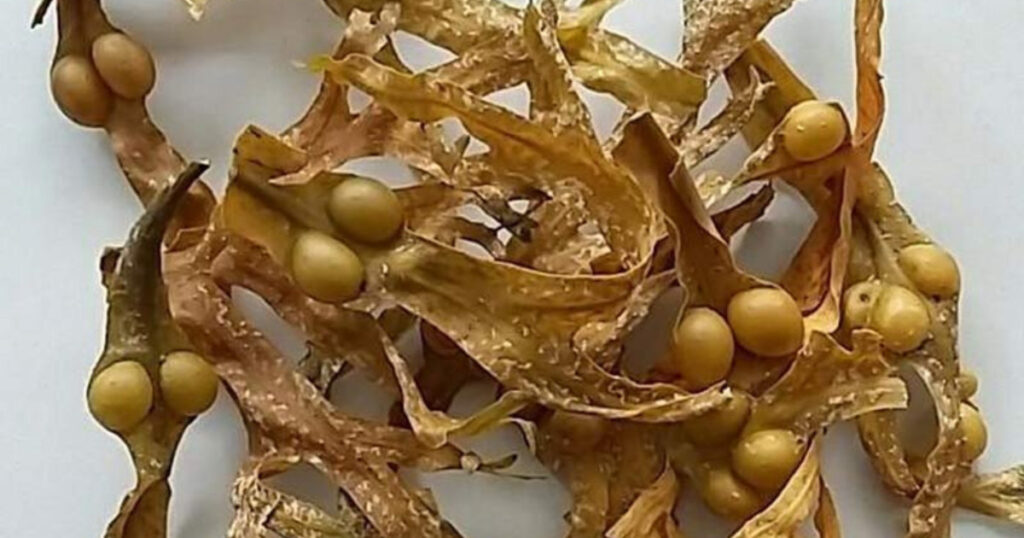
Asian cultures, some parts of the Caribbean, and Ireland have been eating seaweed everyday for thousands of years. It’s not surprising that they have the most abundant variety of recipes that include this amazing food.
You may have noticed that Asian cultures tend to use the most variety of seaweeds in their cooking compared to other cultures. It sheds a little light on how to easily include this marine vegetable to enjoy the benefits of eating seaweed.
You will easily find many of these different types of seaweed at the Asian markets in town or online. Different seaweeds have different flavors and textures. Some are fishy or salty, and some are sweet, and then there are some that have virtually no flavor at all.
What are the 4 Amazing Health Benefits Seaweed Offers?
The direct benefits of eating seaweed everyday could include improving your ability to access important minerals and an array of nutrients which required maintain a healthy body through things like supporting:
- Healthy thyroid function 6
- Detoxify the thyroid and body of toxic compounds 7
- Improved immune system 8
- Neuroprotection potential 9
- Improved heart health 10
- Collagen supporting and stimulating properties for 11
- Strong bones and connective tissue 12
- Younger looking skin through collagen stimulating amino acids 13
- Stronger hair and nails 14
- Healthier eyes 15
- More effective recovery from injury 16
- Omega 3 fatty acids for 17
- Treating depression 18
- Breast cancer prevention and survivorship 19
In the opening we touched on some of the various health benefits of eating seaweed. Being a great source of Iodine, some health problems occur if you have a deficiency of Iodine.
If you have already identified that you have an Iodine deficiency, it is advisable to speak with your trusted Doctor or Dietitian who may well tell you that you could benefit from eating seaweed everyday.
There is evidence to show that there are lots of benefits of eating seaweed every day. If you look at communities that eat seaweed or seagrasses regularly, you will no doubt see that they have much better nutrition and general health compared to communities that don’t.
Unfortunately, there are almost no benefits to much of the food industry to encourage people to eat a healthier wholefood diet. Especially the manufacturers of junk food products and snacks that are loaded with preservatives and chemicals.
This is why we believe that you should be focused on looking at what you eat. Your food directly impacts your health. And as much as we might love the idea of them incorporating seaweed into our meals, no one else is going to do it for us.
In saying that, some pre-made foods do contain seaweed. But the question is, are they healthy? You be the judge. In many cases, there are additives and preservatives that you’ll need to consider.
Did you know that seaweed is also used in the manufacturing of:
- Toothpaste
- Processed foods
- Cream cheese
- Yogurts
- Ice cream, and
- Confectionery
That’s not to say that loading up on these is the best idea. It’s more of an indication on how versatile certain seaweeds can be, and how prolific their use is, even though you might not have known it.
Essentially, it’s up to you, the consumer, to find out how to make seaweed a common household ingredient and part of your lifestyle. You might like to try some of the following ideas:
- Nori Salad
- Carrots with Arame
- White Bean and Asparagus Stew with Wakame
- Soba Soup, and a personal favorite of mine,
- Miso Soup With Spinach and Mushrooms.
Research from the University of Southern Denmark
When we look at medical research from the University of Southern Denmark there is some interesting light on the topic of cardiovascular health.
Ole G. Mouritsen, co-authored an article which was published in Phycologia, which considered 35 different species of seaweed and the benefits of eating seaweed, focusing on their effects on cardiovascular health. It was identified that certain substances, like Iodine, found in seaweed are very important for a healthy heart. 20
In this article, Mouritsen takes the fight to the big end of town and calls out food manufacturers and Governments on their current practices and shortcomings. What a champion!
He suggests that adding a little seaweed to foods that are manufactured on large scales and widely consumed would do a lot of good in addressing critical health issues.
There has also been other independent research done that shows that certain types of seaweed may be beneficial during pregnancy. It helps with brain and, mental development.
As mentioned, like with all things, there is such a thing as too much of a good thing. And if you are an expecting mother it is strongly advised to seek specialist advice before making any kind of diet changes during your pregnancy.

There have also been other studies completed that show that the benefits of eating seaweed includes helping with improving cognitive development later in life. 21 22
These studies showed that the healthy intake of seaweed, also referred to as macroalgae, helped with the prevention of:
- Depression
- Alzheimer’s disease
- Bipolar disorder
- Dementia, and
- Other progressive neurodegeneration conditions
Are Seaweed Snacks Really Healthy?
The first obstacle you may find you encounter is based on marketing. The vast number of premade products aren’t as good for you as they are made out to be. This type of misinformation, or puffery, happens all too frequently in marketing.
Many people may choose what they think is a healthy snack, only to find out that it’s not as good for them as they were led to believe it was. Snacks aren’t likely to help you access the benefits of eating seaweed.
Seaweed crisps (or chips) are becoming more and more popular. You may have seen them being sold at big-name stores and supermarkets. Reading the ingredients section on the back of the pack may seem complicated, but there are some great resources to help with decoding these.
They are sheets of dried, seasoned and roasted seaweed. It’s the same type of thing that they use to wrap around the outside of your sushi.
These have been promoted as a healthy alternative to potato crisps (chips) which have been deep-fried or baked. But stop to take a look at the Nutritional Information Panel on the back of these.
Ask yourself ‘Is this what I really want to put in my body?’ before you take the plunge into making these a regular part of your diet.
As much as I am promoting the health benefits of eating seaweed every day, some types need to be given more careful consideration.
When choosing your seaweed snacks, be sure to check the labels. You want to make sure that you’re not consuming any unnecessary ingredients like added sugar and artificial additives.
I have found that some brands are oilier than others, which I don’t like. They tend to leave an aftertaste which reminds me of burping up the aftertaste of omega-3 fish oil capsules.
These highly processed forms of snacks can be quite addictive. Largely based on the preservatives and flavoring that they are made with. Be careful with these.
The best form of seaweed to make a regular part of your day are the ones that have not been highly processed. Simply dried and presented for sale tends to be the best option with the greatest gains to be had from the benefits of eating seaweed.
While on the topic of product transparency, check out Yuka, an independent app that lets you scan the barcodes for your products to see what is in them and what it all means. This is a good starting point for those who want to be more informed about what is in the products they are purchasing.

Supporting Collagen For Vegans
In the opening, I mentioned that there are benefits related to the collagen-stimulating properties found in seaweed. This is great for helping maintain health and for supporting many bodily functions.
Well, here’s something that has been often overlooked. Vegans rejoice! There are typically no sea animals harmed in the making of seaweed. It grows naturally, adds a food source for the local sea life, and when in balance with the local ecosystem, it helps support healthier oceans.
Best of all, some species of seaweed have also been identified as a suitable source of collagen stimulants for vegans. Making this an easier option for health-conscious people like you.
Regardless of your values, the abundant source of collagen-stimulating constituents offered through seaweed is readily accessible. You can make a gel from Sea Moss and apply it to your face for instant nourishment.
For a Vegan that is much more appealing than dabbing yourself down with bone broth. The benefits of eating seaweed is akin to winning!
Weight Loss Remedy
But wait, there’s more! Seaweed has also been consumed by many as a weight loss remedy. There are a few primary points of evidence that Researchers have found to support it’s effectiveness. 23
Seaweed Supports Healthy Thyroid Function
So, in other words, the metabolism is the rate at which the body burns fat for energy. When people have a thyroid deficiency, they tend to pick up weight more easily.
So apart from having a healthy diet, one way to address that is to have seaweed regularly to restore the balance.
Seaweeds Contain Fucoxanthin
There is another ingredient in seaweed, particularly Kelp or brown seaweeds, called fucoxanthin. This is found in seaweeds like Sea Moss (Eucheuma Cottonii), Hijiki (Hijikia fusiformis) and Wakame (Undaria pinnatifida), which can assist with weight loss. 24
Fucoxanthin is gaining in popularity and is making more of an appearance in products targeting weight loss. However, the data from independent studies on these products, and what they say they contain are strikingly different. This supports why I believe that it pays to take what is said in the marketing spin with a grain of sea salt. 25
Seaweed is also good for Cellulite
The trace elements and minerals in seaweed are really good for blood circulation. As we know, where there is cellulite, there is poor circulation to those areas where the cellulite plants itself.
The presence of laminaran in specific seaweeds has proven to be of interest to cosmeceutical companies. The bioactive properties of laminaran, rather than its physical properties are considered to be of the most value in anticellulite products. 26
How can you benefit from this? Seaweed is the thing to eat more of. You could also do a seaweed wrap, which is when you apply seaweed onto the skin.
FAQs on the Benefits of Eating Seaweed Everyday
What Happens if you Eat Seaweed Everyday?
If you make seaweed a consistent, yet balanced staple, you are likely to notice the benefits of eating seaweed within a relatively short timeframe. Many people share their experience with consuming Sea Moss online as an anecdotal form of evidence to include outcomes like improving energy levels, libido, digestive health, skin health and a younger appearance, and improved sleep as some of the benefits of eating seaweed consistently.
How much Seaweed should I Eat Daily?
Depending upon your needs, this can vary from avoiding seaweed completely, right through to making it a part of every meal. This is not something that tailored and specific personal advice can be given for. It is advisable to discuss this with your Dietitian to make sure your needs are being fully met. Nothing offered here is to be considered as medical advice.
What does Seaweed give to the Body?
The range of seaweed health benefits is almost as brad as the number of seaweeds know to man. Being a rich source of fatty acids, amino acids, vitamins and minerals, the benefits from seaweed are aligned with nutritional health right through to wound healing.
What seaweed is able to give to the body has been studied extensively by Researches around the world. It is easy to see how seaweed may be considered a panacea of sorts.
What does Seaweed do to your Stomach?
Seaweed consists of insoluble fibers in the form of long chain polysaccharides. These act as prebiotics. As a good source of food for your microbiota they offer a number of benefits of eating seaweed.
The presence of certain amino acids is also understood to assist with maintaining the health of connective tissue. This also plays a key part in keeping your stomach in good order.
Can I Eat Dried Seaweed Everyday?
Owing to the additives in some seaweed snacks, it would be worth limiting these in your diet. Some preservatives, colourings, and flavours can have detrimental effects, particularly when in high concentrations consumed consistently.
To keep an eye on how your intake is going, try using the Yuka app to track what you are consuming.
What are the Benefits of Dried Seaweed vs. Fresh?
The main benefits are that dried seaweed is more convenient to source and has a longer shelf life than fresh seaweed. Dried seaweeds may also trump fresh seaweeds in their mineral density, meaning, you will likely get more out of less compared to fresh.
This should be considered with suitable care though, and you would benefit from speaking with a professional who has the ability to give you tailored medical or nutritional advice.
Is Dried Seaweed Healthy?
Dried seaweed is likely to contain higher concentrations of certain vitamins and minerals on a pound for pound basis when compared to fresh. This may help with increasing the benefits of eating seaweed. It is with this in mind that you will need to consider what the specific nutritional contents are within any seaweed, and how these support your health needs.
Keep in mind that higher concentrations of vitamins and minerals isn’t always a good thing. There are some vitamins and minerals that the body is able to offload more effectively than others when it has all that it needs for maintaining good health.
Is Seaweed Good for Weight Loss?
Owing to the presence of fucoxanthin in certain seaweeds, and the concentration of insoluble fibers, seaweed can assist with weight loss through a number of mechanisms.
Seaweeds are able to support better digestive health, block the body’s ability to absorb fats, provide essential nutrients and even stave off hunger through supporting satiety.
Are there any Seaweed Side Effects?
Some seaweeds are high in heavy metals, such as Hijiki, which is high in arsenic. Limiting your intake of this specific seaweed is highly recommended with many authoritative sources capping it at 5g a day.
Some side effects may include allergic reactions, particularly if you are allergic to shell fish or seafood.
Special consideration needs to be given when you are on blood thinning medication. Certain active elements within many seaweeds have anticoagulant properties.
Being high in Iodine there are concerns for breastfeeding and expectant mothers around seaweed consumption. Always seek specialist advice first.
Conclusion
You might recall where I mentioned earlier that some species of seaweed are popularly believed to contain up to 92 minerals. If this is true, this means that there are various nutritional benefits to be found in seaweed, depending on the species.
Here are just a few of the minerals you will consume by eating seaweed everyday:
- Calcium
- Iodine
- Iron
- Magnesium
- Phosphorus
- Potassium
- Sulfur
- Sodium, and
- Zinc.
As you no doubt have been able to see, seaweed is great for strengthening and boosting the immune system. It helps to increases energy levels. Seaweed is also good for brain function. And, we’ve covered the ability for seaweed to help with weight loss.
The pros definitely outweigh any cons in my opinion. Suffice to say, I’m a big fan!
Many people will also testify (anecdotally) that since adding seaweed to their diets, they have noticed weight reduction and enhanced vitality.
I think it’s fair to say that many cultures don’t eat enough seaweed as part of their diet. And as Researchers have been consistently studying the benefits of eating seaweed everyday, and judging by the prolific publication of resources in medical journals, they are clearly advocates.
References
- “Tracing the Trans-Pacific Evolutionary History of a Domesticated Seaweed (Gracilaria chilensis) with Archaeological and Genetic Data” – M. L. Guillemin, M. Valero, S. Faugeron, W. Nelson, C. Destombe, 11 December 2014 [PolsONE] [Archive] ↩︎
- “Iodine deficiency” – World Health Organization, Last Checked 13 December 2022 [WHO] [Archive] ↩︎
- “Dietary Reference Intakes for Vitamin A, Vitamin K, Arsenic, Boron, Chromium, Copper, Iodine, Iron, Manganese, Molybdenum, Nickel, Silicon, Vanadium, and Zinc” – Institute of Medicine (US) Panel on Micronutrients, 2001 [PubMed] [Archive] ↩︎
- “Survey Of Iodine Levels In Seaweed And Seaweed Containing Products In Australia” – FSANZ, December 2016 [Food Standards Australia] [Archive] ↩︎
- “Assessment of Japanese iodine intake based on seaweed consumption in Japan: A literature-based analysis” – T. T. Zava, D. T. Zava, 5 October 2011 [PubMed] [Archive] ↩︎
- “Iodine Intake is Associated with Thyroid Function in Mild to Moderately Iodine Deficient Pregnant Women” – M. H. Abel, T. I. M. Korevaar, I. Erlund, G. D. Villanger, I. H. Caspersen, P. Arohonka, J. Alexander, H. M. Meltzer, A. L. Brantsæter, 18 September 2018 [PubMed] [Archive] ↩︎
- “Potential Effects of Iodine Supplementation on Inflammatory Processes and Toxin Removal… (full title redacted)” – A. Boretti, B. K. Banik, 28 October 2021 [PubMed] [Archive] ↩︎
- “The Enhancing Immune Response and Anti-Inflammatory Effects of Caulerpa lentillifera Extract in RAW 264.7 Cells” – S. Yoojam, A. Ontawong, N. Lailerd, K. Mengamphan, D. Amornlerdpison, 26 October 2021 [PubMed] [Archive] ↩︎
- “Therapeutic Potential and Nutraceutical Profiling of North Bornean Seaweeds: A Review” – M. D. Shah, B. A. V. Maran, S. R. M. Shaleh, W. H. Zuldin, C. Gnanaraj, Y. S Yong, 25 January 2022 [PubMed] [Archive] ↩︎
- “Utilization and Management of Eucheuma cottonii Seaweed and Cassava” – M. Walaluya, V. Lilabite, 24 December 2020 [DeepDyve] [Archive] ↩︎
- “Importance of amino acid composition to improve skin collagen protein synthesis rates in UV-irradiated mice” – H. Murakami, K. Shimbo, Y. Inoue, Y. Takino, H. Kobayashi, 23 August 2011 [PubMed] [Archive] ↩︎
- “Vitamins and Minerals” – NCCIH, February 2018 [NIH] [Archive] ↩︎
- “Importance of amino acid composition to improve skin collagen protein synthesis rates in UV-irradiated mice” – H. Murakami, K. Shimbo, Y. Inoue, Y. Takino, H. Kobayashi, 23 August 2011 [PubMed] [Archive] ↩︎
- “Hair-Loss Preventing Effect of Grateloupia elliptica” – J. I. Kang, S. C. Kim, S. C. Han, H. J. Hong, Y. J. Jeon, B. Kim, Y. S. Koh, E. S. Yoo, H. K. Kang, 20 January 2012 [PubMed] [Archive] ↩︎
- “Collagen: A potential factor involved in the pathogenesis of glaucoma” – W. Huang, Q. Fan, W.Wang, M. Zhou, A. M. Laties, X. Zhang, 4 September 2014 [PubMed] [Archive] ↩︎
- “Production, Characterization and Biocompatibility Evaluation of Collagen Membranes Derived from Marine Sponge Chondrosia reniformis Nardo, 1847” – M. Pozzolini,S. Scarfì, L. Gallus, M. Castellano, S. Vicini, K. Cortese, M. G. Gagliani, M. Bertolino, G. Costa, M. Giovine, 29 March 2018 [PubMed] [Archive] ↩︎
- “Polyunsaturated fatty acids in various macroalgal species from north Atlantic and tropical seas” – V. J. T. Ginneken, J. P. F. G. Helsper, W. Visser, H. Keulen, W. A. Brandenburg, 22 June 2011 [PubMed] [Archive] ↩︎
- “Chapter 2 – Nutritional and Digestive Health Benefits of Seaweed” – N. Rajapakse, S. K. Kim, 4 November 2011 [ScienceDirect] [Archive] ↩︎
- “Brown Seaweed as a Breast Cancer Preventive” – J. Teas, S. G. Komen, 17 September 2010 [Clinical Trials] [Archive] ↩︎
- “A role for dietary macroalgae in the amelioration of certain risk factors associated with cardiovascular disease” – M. L. Cornish, A. T. Critchley, O. G. Mouritsen, 16 July 2015 [Taylor & Francis] [Archive] ↩︎
- “Bioactive Compounds from Macroalgae in the New Millennium: Implications for Neurodegenerative Diseases” – M. Barbosa, P. Valentão, P. B. Andrade, 12 September 2014 [PubMed] [Archive] ↩︎
- “Consumption of seaweeds and the human brain” – M. L. Cornish, A. T. Critchley, O. G. Mouritsen, 20 January 2017 [SpringerLink] [Archive] ↩︎
- “Marine Algae as a Potential Source for Anti-Obesity Agents” – C. W. Loy, P. S. Moi, 14 December 2016 [PubMed] [Archive] ↩︎
- “Biosynthetic Pathway and Health Benefits of Fucoxanthin, an Algae-Specific Xanthophyll in Brown Seaweeds” – K. Mikami, M. Hosokawa, July 2013 [PubMed] [Archive] ↩︎
- “Evaluation of Fucoxanthin Content in Popular Weight Loss Supplements: The Case for Stricter Regulation of Dietary Supplements” – M. F. Hossain, M. Rashid, T. Burniston, M. Ahmed, W. Wu, K. A. Kataye, R. Sidhu, M. Justice, S. Abdelfattah, 5 September 2019 [ClinMed] [Archive] ↩︎
- “Seaweeds as Source of Bioactive Substances and Skin Care Therapy—Cosmeceuticals, Algotheraphy, and Thalassotherapy” – L. Pereira, 10 October 2018 [MDPI] [Archive] ↩︎
Last Updated on 5 months by D&C Editorial Team
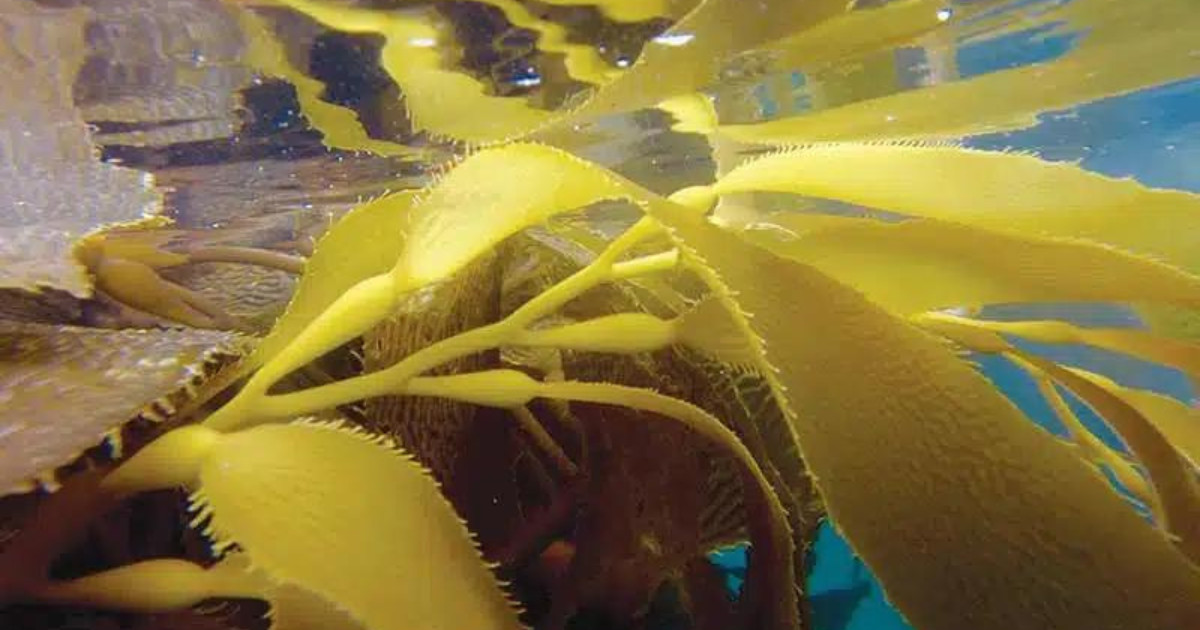
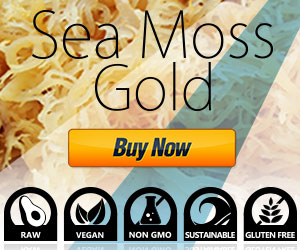

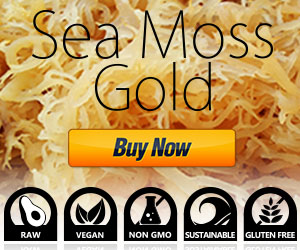



Is the collagen stimulation from seaweed really any different to collagen that comes from animals? Other than it being from a plant, i mean is it different in any other way like structure or anything?
Hello Jurge,
Thank you for your question. Plant based collagen stimulant constituents are smaller than animal based collagen. This can be confirmed in the report on Plant-Derived Human Collagen Scaffolds for Skin Tissue Engineering which looks at the pore sizes of bovine (cow) collagen sponges being larger than those in humans. This test used freezing conditions as a means to measure the pore sizes.
The following is an excerpt from the NCBI website where analysis had been done on collagen fiber sizes and shapes.
Is eating sea moss everyday good for controling seizures?
Hello Judah, thank you for your question.
This is a complex one to tackle as there are many different triggers for seizures. Depending on what the underlying cause is there may be value derived from sea moss. But, this is only valuable if it does not conflict with any treatments that are being undertaken at this stage.
As I’m not a Doctor, and I can’t give you tailored medical advice, I would suggest that you have a look at the following studies on how specific components of sea moss may help with seizures. Please keep in mind that this is a very broad topic, and that there are many different species of seaweed sold as sea moss.
Let me start off with sharing with you that I’m not a fan of animal testing, so it is with some reluctance that I share certain results from certain testing methodologies. At this stage this data is all that I can draw on to help you with your question.
Unfortunately, the scope of research on humans with seaweed as a functional food, or a source of medical advancement is virtually zero.
As we improve in computer modeling and can better emulate responses between certain compounds and chemicals in the human body there will, with time, be a much hailed reduction in animal research.
This study looked at the analgesic effects of edible seaweeds linked to the reduction of seizure like responses to pain.
An excitatory amino acid known as Kainate which has been extracted from certain seaweeds has been suggested to provide some interesting data.
Another area to explore is the research behind Ecklonia cava. This has been found to have results that may suggest there is hope for sufferers of epileptic activity.
Ecklonia cava is reported to have specific effects on the central nervous system. This may be the beginning of a new direction in the treatment options available for neuropsychiatric disorders.
I hope that this response has been helpful for you.
Wow this is very good I went through this.it is healthy and I’m willing to be a distributor.
Thank you so much for your kind feedback, Tirafalo.
You’re welcome to reach out to us through email to discuss distribution further, or, you could take a look at our Affiliate Program also.